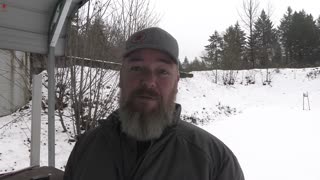Premium Only Content

A complex of drawings that attracts many tourists and riddle seekers
The complex of drawings, which attracts many tourists and seekers of mysteries, is located 450 kilometers from the capital of Peru, Lima. Its total territory stretches for more than 50 kilometers from north to south and 5-7 kilometers from west to east. Thus, mysterious lines, giant geometric figures and drawings (geoglyphs) cover the surface of the desert with an area of approximately 500 square kilometers. At the moment, about 30 drawings are known (bird, monkey, spider, flowers, etc.); also about 13 thousand lines and stripes and about 700 geometric figures (primarily triangles and trapezoids, as well as about a hundred spirals). Since the images reach several hundred meters in length and are difficult to recognize from the ground, they were officially discovered only in modern times, when flying over the plateau in the first half of the 20th century. In 1994, they were included in the UNESCO World Heritage List. These drawings were discovered by accident, thanks to aviation, since they can only be seen from an airplane or from a high altitude. The first to see giant geometric figures from an airplane in 1920 was the American explorer Paul Kosok. The scientist peered in amazement at this incredible kaleidoscope of trapezoids, triangles and spirals that dotted the plateau over a vast territory. In addition, there were images of over 100 known plants and animals, as well as a scattering of incomprehensible, unrelated straight lines.
These lines especially struck the scientist. They cut through the desert in all directions without any apparent order, were absolutely straight and ran beyond the horizon, completely ignoring the unevenness of the terrain - through the hills and valleys.
The 60 km long sandy plain of Nazca is located 400 km south of the Peruvian capital Lima, between the cities of Nazca and Palpa. In these places, the earth does not see moisture for years. Drops of rare rain, falling on a hot rocky surface, immediately evaporate. This lifeless space is an ideal place for incorruptible burials. Later, studying all the drawings on the spot, Paul Kosok saw that the technology for their execution was surprisingly simple. It was only necessary to move the stones and the turf beneath them, exposing the soft earth, and lay them in a row.
Friends, if you liked the video, click on +, add comments and optionally subscribe to promote the channel !!!!!!
-
 1:04
1:04
WCPO
3 years agoMaui: Too many tourists
8 -
 1:04:55
1:04:55
Bare Knuckle Fighting Championship
3 days agoBKFC ITALY PRESS CONFERENCE | LIVE!
1.82K -
 10:04
10:04
Space Ice
1 hour agoThe Movie Silent Hill Is Like Resident Evil Without The Good Parts - Worst Movie Ever
651 -
 5:49
5:49
Hannah Barron
21 hours agoRedneck Euro Mount
4.28K16 -
 32:34
32:34
hickok45
6 hours agoSunday Shoot-a-Round # 268
1.15K6 -
 27:33
27:33
The Finance Hub
15 hours ago $0.20 earnedBREAKING: ALINA HABBA JUST DROPPED A MASSIVE BOMBSHELL!!!
2522 -
 40:23
40:23
PMG
20 hours ago $0.06 earnedHannah Faulkner and Dr. Michael Schwartz | EXPOSING BIG PHARMA
836 -
 18:55
18:55
GBGunsRumble
17 hours agoGBGuns Range Report & Channel Update 15FEB25
155 -
 13:31:32
13:31:32
iViperKing
18 hours agoGood Times + Good Energy Ft. Whez.. #VKGFAM #RRR
82.3K15 -
 12:24
12:24
Winston Marshall
1 day agoWOAH! Bannon just Revealed THIS About MUSK - The Tech-Right vs MAGA Right Civil War Ramps Up
211K297